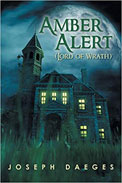
 |
A gothic novel of a haunted house and a besieged family, the author’s tale includes the components and adventures of new occupants Paul and his family, a friendly but mysterious former owner, the disappearance of Paul’s son Angelo, and a strange, tenacious blackbird who is other than she appears at first to be. Many of the standard components of the genre are present. Included in the mix are clues that manifest in a magic mirror, voices that alternately warn and guide the family in their quest to crack the mystery behind the haunting and Angelo’s disappearance, and a general air of uncertainty as the family learns to discriminate between helpful and destructive supernatural forces. Through it all, Paul, who seems to have the most emotional investment since he is Angelo’s father, appears to be a tower of strength, even as he questions, reacts to, and fears the circumstances evolving in and around the house. The son’s name derivative, “Angel,” makes the reader wonder if the implied connection to divinity might be the reason for his capture and disappearance.
The classic gothic form, first ascribed to The Castle of Otranto by the English author Horace Walpole, was first published in 1764. Then as now, gothic mystery horror combines elements of the supernatural with mystery and suspense. This book presents its puzzles in sequence and graphically. Along the way there are lessons to learn about the nature of good and evil, heroism and cowardice, and the expected and unexpected in people and situations. Along with the passion and emotion of the eerie background are the passions and vicarious enjoyment of romance, as well as a hoped-for happy ending.
While the text would benefit from extensive editing, the author’s passion and enjoyment of this work are evident. The plot emphasizes struggles in every chapter. No character is exempt from often life-challenging fights with supernatural forces, disagreements and miscommunications with other characters, and (especially effective for the genre) tales of the past in which others have learned lessons after their own traumatizing adventures in and around the property. A question that the reader might ask is this: Why do people buy and stay around the house? Other people haven’t; the house has had many owners briefly before they fled. But the initial and primary reason for the current family to stay to look for clues about the mystery is its attempts to find the missing Angelo. The help and warnings that the group receive appear to indicate that the “forces” which confuse and frighten the group often mean to help them. Like many stories—of which The Wizard of Oz, Frankenstein, and Rebecca are prime examples—the group can achieve its goals by facing its biggest fears and challenges, as well as accepting the validity of oddities and weird occurrences. To succeed, even to survive, the protagonists must learn whom or what to trust and to put aside what is wrong or untrue. This is because gothic stories, like this one, are morality tales as well as horror fiction.